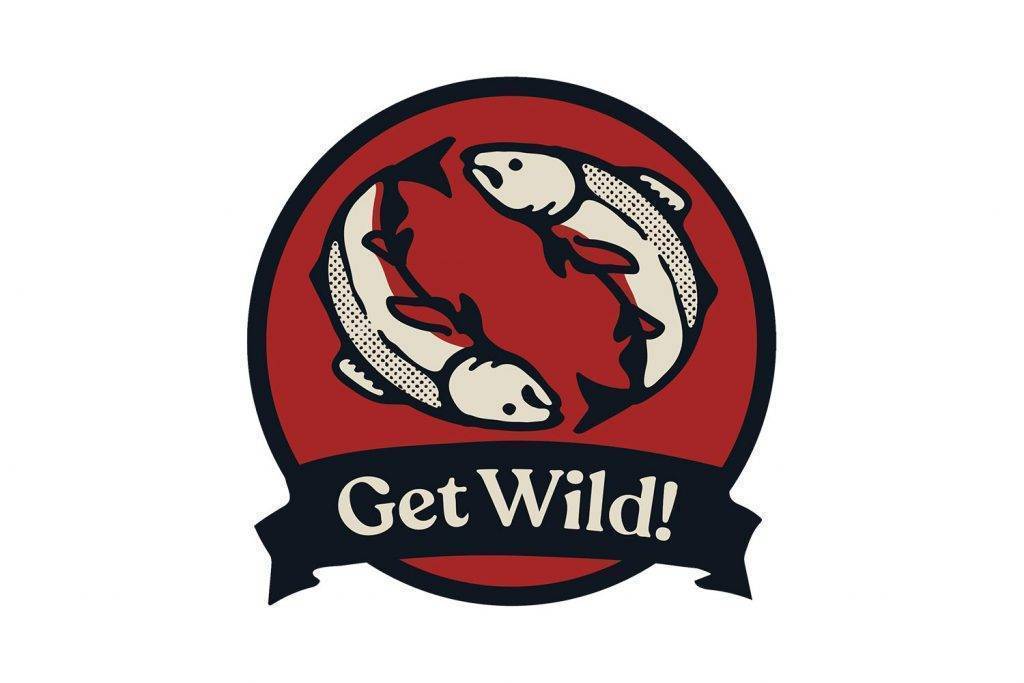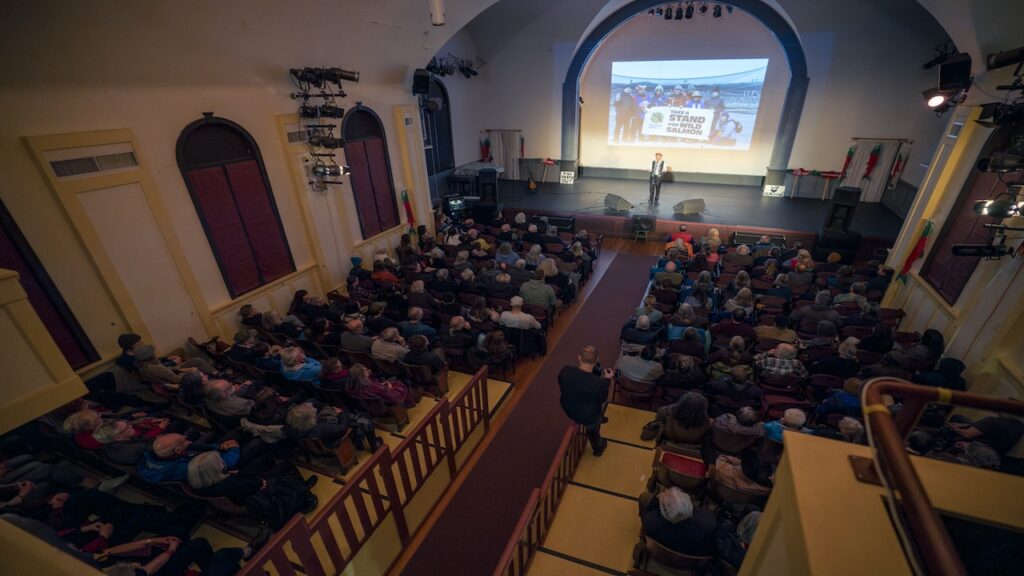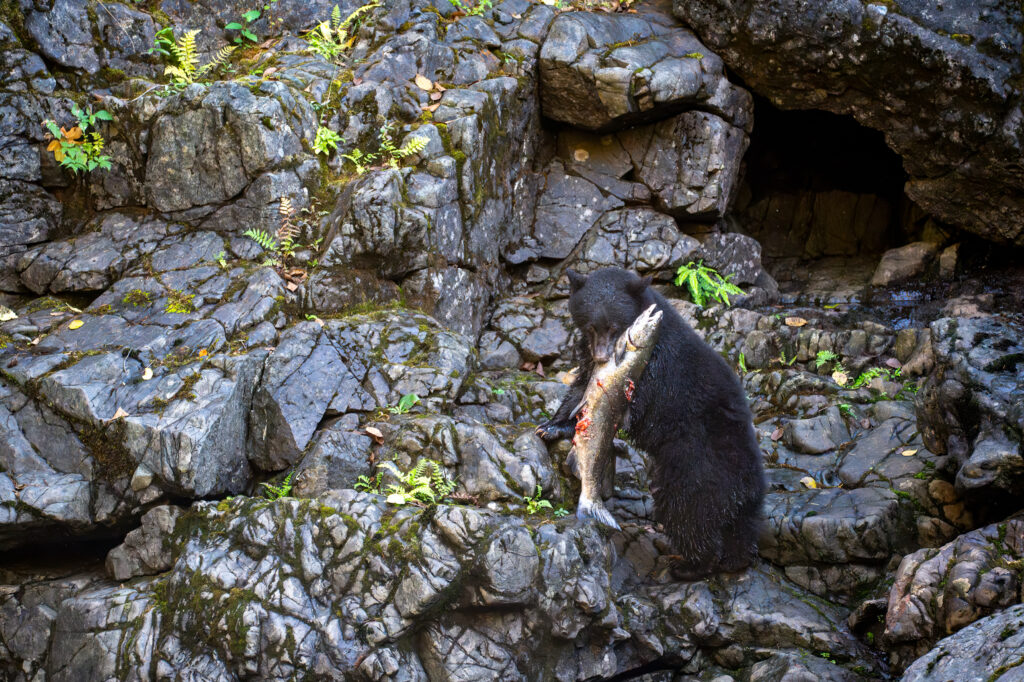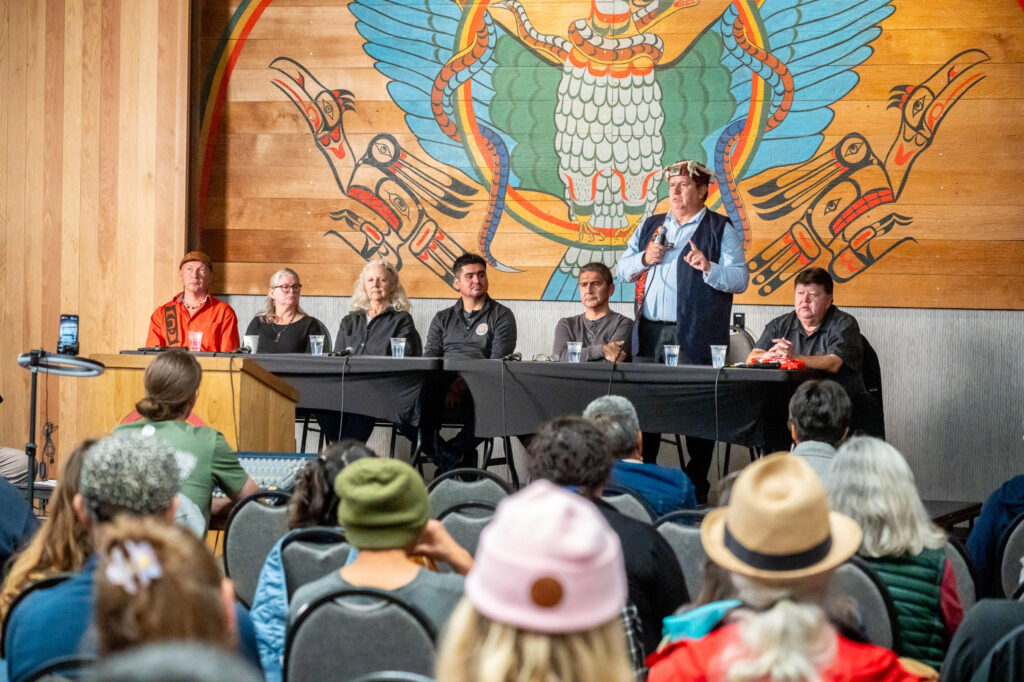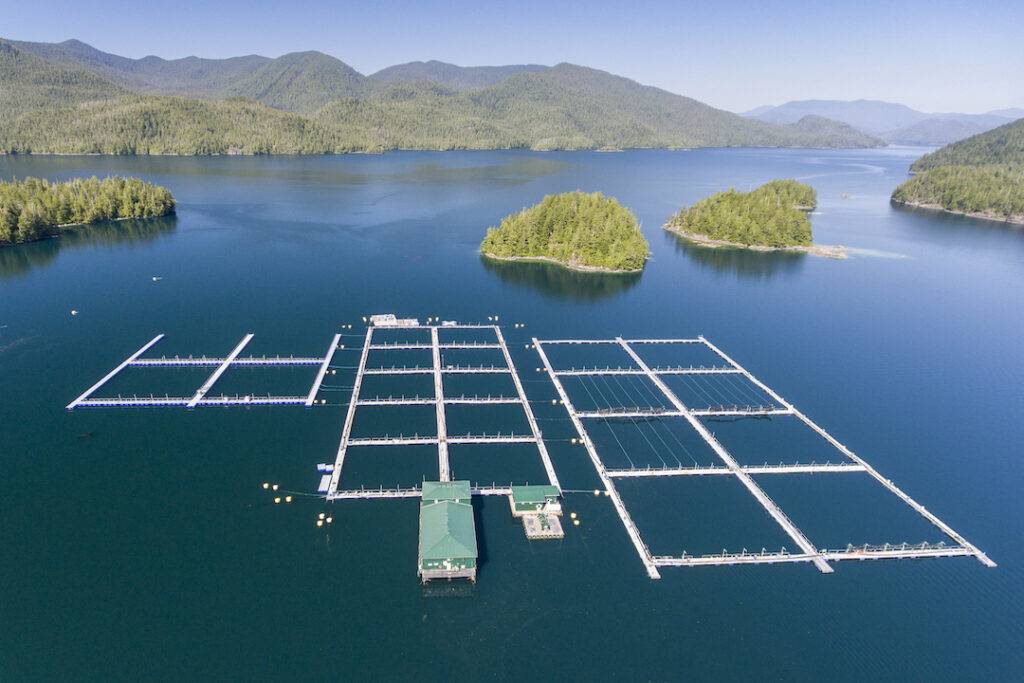It’s hard to gasp underwater. But that’s what photographer Tavish Campbell did when when he first saw the bright red blood water gushing out of Creative Salmon’s fish processing plant, into Tofino Harbour. It was Autumn 2017. Clayoquot Action sent tissue samples from the blood water to the lab for testing—they found piscine orthoreovirus (PRV).
Piscine orthoreovirus (PRV) is a salmon virus which appears to come from the northern Atlantic Ocean. No PRV genetic sequence had been found in BC prior to 2011—now the evidence suggests PRV is spreading to wild salmon. The most likely way it got here is via the 30 million Atlantic salmon eggs imported to BC.
After Campbell’s first Tofino blood water dive, the newly-minted government in BC began a review of compliance at all fish processing plants in the province—a win for people power! The government review concluded that plants should have a finer mesh on effluent pipes to filter out more tissue, and treatment to remove the red colour of the blood water (photo below).
Campbell was invited back to repeat the Tofino dive in 2018, and again in 2019. Each time the effluent was less voluminous, and less red. But every time it tested positive for PRV-1a, the Atlantic variant of the virus.
All of Creative’s salmon farms were PRV-infected
In 2019 Clayoquot Action completed a survey of all active salmon farms in the Clayoquot Sound UNESCO Biosphere Region. Our Going Viral Report documented that all of Creative Salmon’s active farms in Tla-o-qui-aht First Nations territory tested positive. This is why the effluent at their processing plant is infected with PRV: salmon farms are breeding grounds for this and other viruses.
Creative Salmon began experiencing jaundice on their Clayoquot Sound operations in 2004. They invited Department of Fisheries genomic scientist Dr. Kristi Miller to help them with their undiagnosed jaundice problem in 2011. Miller found PRV. Yet, to this day Creative Salmon insists their jaundice is still undiagnosed…
In Pacific Chinook salmon, DFO scientists report that PRV is strongly associated with the rupture of red blood cells, overwhelming the vital organs, resulting in jaundice, organ failure and death. Their study concluded “migratory Chinook salmon may be at more than a minimal risk of disease from exposure to high levels of PRV occurring on salmon farms.” (Di Cicco & et al. 2018)
Because Creative rears Pacific Chinook salmon, it is of particular concern that this Atlantic virus is replicating in Creative Salmon’s operations, adapting to Pacific Chinook, and spreading through the waters of the Clayoquot Sound UNESCO Biosphere Region—where wild Chinook are on the brink of extinction.
Lack of scientific certainty should not postpone measures
Three court battles have been waged (and won) to stop the transfer of PRV-infected fish into open-net pen salmon farms. A 2015 judgment stated “…a lack of full scientific certainty should not be used [as] a reason for postponing measures to prevent environmental degradation”. Nonetheless, PRV-infected farmed salmon continue to be transferred into open-net pens.
During the International Year of Salmon in 2019, salmon returns to rivers in British Columbia were the lowest in the history of Canada. The situation here in Clayoquot Sound is dire: large unlogged river valleys like the Megin River saw a mere 8 chinook return to spawn; the Moyeha—the adjacent valley—saw only 20.
Everything in Clayoquot Sound depends on wild salmon: they feed orcas, bears, wolves and over a hundred other species. Indigenous Peoples and cultures have depended on wild salmon for millennia.
The government of Canada has pledged to move salmon farms into closed containment by 2025. In the interim, it is time to implement the Precautionary Principle and stop the transfer of PRV-infected fish into BC salmon farms.
Please take a moment to add your voice—send a letter to Fisheries Minister Bernadette Jordan today!
Dan Lewis is Executive Director of Clayoquot Action.
Photos courtesy of Tavish Campbell Photography. Video by Jérémy Mathieu.


